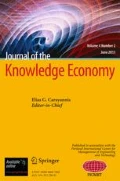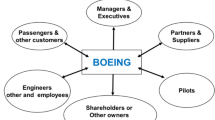Abstract
Studies in Knowledge Management, targeting non-profit organizations (NPOs) are scarce, as opposed to what is happening in the private and public sectors. To study this, we opted for a case study of organizations such as the Portuguese Fire Brigades (FBs), unique in their action and identity and accompanies the need increasingly recognized by society, in enabling these organizations of competencies for the best possible performance in the face of tragic events that have occurred in recent years in Portugal, particularly with regard to large fires. The present study focuses on the sharing of tacit knowledge in NPOs in Portugal. Taking as a case study, the FBs present as objectives, the assessment of the most relevant factors and the most prevalent barriers to this sharing. A careful reading of the literature on tacit knowledge sharing allowed the identification of possible indicators and barriers to sharing this knowledge. The data obtained through questionnaires applied to the firefighters were subjected to two exploratory factorial analyses in order to diagnose the tacit knowledge sharing factors and the types of barriers to this sharing. Thus, 3 factors have been identified that are conducive to the sharing of tacit knowledge within these organizations: organizational culture, individual characteristics, and organizational structure. Four types of barriers with higher prevalence were also identified: personal, communicational, technological, and resource barriers or infrastructures. As limitations to the study, it is important to mention that the present research focuses exclusively on the sharing of tacit knowledge, not considering other forms of knowledge, and that if it is a case study, even with heterogeneous organizations, it cannot be replicated for different realities.

Similar content being viewed by others
References
Awad, E. M., & Ghaziri, H. (2007). Knowledge management. Delhi: Pearson Education.
Castellani, P., Rossato, C., & Giareta, E. (2019). Tacit knowledge sharing in knowledge-intensive firms: the perceptions of team members and team leaders. Review of Managerial Science. https://doi.org/10.1007/s11846-019-00368-x.
Chow, C., Deng, J. F., & Ho, J. (2000). The openness of knowledge sharing within organizations: a comparative study in the United States and the PRC. Journal of Management Accounting Research, 12, 65–95.
Connelly, C. E., & Kelloway, E. K. (2003). Predictors of employees’ perceptions of knowledge-sharing culture. Leadership & Organization Development Journal, 24(5/6), 294–305.
Cross, R. et al. (2001). Knowing what we know: supporting knowledge creation and sharing in social networks, Organizational Dynamics, 30(2), 100–120. https://doi.org/10.1016/S0090-2616(01)00046-8
Dalkir, K. (2005). Knowledge management in theory and practice. Boston: Elsevier.
Davenport, T. H., & Prusak, L. (1998). Working knowledge: how organisations manage what they know. Boston: HBS Press.
De Long, D. W., & Fahey, L. (2000). Diagnosing cultural barriers to knowledge management. The Academy of Management Executive, 14(4), 113–127.
Disterer, G. (2003). Fostering knowledge sharing: why and how? In Iadis International Conference E-Society, 2003. Lisbon.
Duffey, L. (2013). Techniques and technologies to support the transfer of tacit knowledge among co-located teams. Master Thesis, University of Oregon Applied Information Management Program.
Ellis, K. (2001). Dare to share, Training. February, pp. 74–80.
Fahey, L., & Prusak, L. (1998). The eleven deadliest sins of knowledge management. California Management Review, 40(3), 265–276.
Finerty, T. (1997). Knowledge – the global currency of the 21st century. Knowledge Management, 1(1), 20–26.
Fotler, M. D. (1981). Is management really generic? Academy of Management Review, 6(1), 1–12.
Gibbert, M., Probst, G., & Davenport, T. (2011). Sidestepping implementation traps when implementing knowledge management: lessons learned from Siemens. Behavior and Information Technology, 30(1), 63–75.
Gold, A., Malhotra, A., & Segars, A. (2001). Knowledge management: an organizational capabilities perspective. Journal of Management Information Systems, 18(1), 185–214.
Graham, A., & Pizzo, V. G. (1996). A question of balance: case studies in strategic knowledge management. European Management Journal, 14(4), 338–346.
Hair, J., et al. (2005). Análise Multivariada de Dados (5th ed.). Porto Alegre: Bookman.
Haldin-Herrgard, T. (2000). Difficulties in the diffusion of tacit knowledge in organizations. Journal of Intellectual Capital, 1(4), 357–365.
Hansen, M., Nohria, N., & Tierney, T. (1999). What’s your strategy for managing knowledge? Harvard Business Review, p., 1–10.
Hendriks, P. (1999). Why share knowledge? The influence of ICT on the motivation for knowledge sharing. Knowledge and Process Management, 6(2), 91–100.
Holste, J., & Fields, D. (2010). Trust and tacit knowledge sharing and use. Journal of Knowledge Management, 14(1), 128–140. https://doi.org/10.1108/13673271011015615.
Hong, D., Suh, E., & Koo, C. (2011). Developing strategies for overcoming barriers to knowledge sharing based on conversational knowledge management: a case study of a financial company. Expert Systems of Applications, 38(12), 14417–14,427.
Hume, C., & Hume, M. (2008). The strategic role of knowledge management in nonprofit organisations. International Journal of Nonprofit and Voluntary Sector Marketing, 13, 129–140.
Hurley, T. A., & Green, C. A. (2005). Knowledge management and the nonprofit industry: a within and between approach. Journal of Knowledge Management Practice. Perspectivas em Ciência da Informação, 21(1), 97–118 Available at http://www.tlainc.com/articl79.htm.
Ives, W., Torrey, B., & Gordon, C. (2000). Knowledge sharing is a human behavior. In D. Morey et al. (Eds.), Knowledge Management. Cambridge: MIT Press.
Johnson, W. H. A. (2007). Mechanisms of tacit knowledge: pattern recognition and synthesis. Journal of Knowledge Management, 11(4), 123–139.
Jóia, L. (2007). Knowledge management strategies: creating and testing a measurement scale. International Journal of Learning and Intellectual Capital, 4(3), 203–221. https://doi.org/10.1504/IJLIC.2007.015607.
Joia, L., & Lemos, B. (2010). (2010). Relevant factors for tacit knowledge transfer within organisations. Journal of Knowledge Management, 14, 410–427.
Kikoski, C. K., & Kikoski, J. F. (2004). The inquiring organization: tacit knowledge, conversation, and knowledge creation skills for 21st century organizations. Westport: Praeger.
Laudon, K., & Laudon, J. (2012). Management information systems: managing the digital firm. Harlow: Pearson Education Limited.
Lelic, S. (2001). Creating a knowledge-sharing culture. Knowledge Management, 4(5), 6–9.
Lemos, B., & Jóia, L. (2012). Relevant factors for tacit knowledge transfer within organizations: an exploratory study. Gestão & Produção, 19(2), 233–246.
Leonhard, D., & Sensiper, S. (1998). The role of tacit knowledge in group innovation. California Management Review, 40(3), 112–125.
Lettieri, E., Borga, F., & Savoldelli, A. (2004). Knowledge management in non-profit organizations. Journal of Knowledge Management, 8(6), 16–30.
McAdam, R., Mason, B., & McCrory, J. (2007). Exploring the dichotomies within the tacit knowledge literature: towards a process of tacit knowing in organizations. Journal of Knowledge Management, 11(2), 43–59.
McDermott, R. (1999). Why information technology inspired but cannot deliver knowledge management. California Management Review, 41(4), 103–117.
McDermott, R. and O’Dell, C. (2001) Overcoming culture barriers to sharing knowledge, Journal of Knowledge Management, 5(1), 76–85.
McInerney, C. (2002). Knowledge management and the dynamic nature of knowledge. Journal of the American Society for Information Science and Technology, 53(12), 1009–1018.
Meyer, P. (2002). Improvisation power. Executive Excellence, 19(12), 17–18.
Michailova, S., & Husted, K. (2003). Knowledge-sharing hostility in Russian firms. California Management Review, 45(3), 59–77.
Mládková, L. (2012). Sharing tacit knowledge within organizations: evidence from the Czech Republic. Global Journal of Business Research, 6(2), 105–115. https://doi.org/10.4135/9781446217375.
Mohajan, H. M. (2016). Sharing of tacit knowledge in organizations: a review. American Journal of Computer Science and Engineering, 3(2), 6–19.
Nonaka, I. (1994). A dynamic theory of organizational knowledge creation. Organization Science, 5(1), 14–37.
Nonaka, I., & Takeuchi, H. (1995). The knowledge creating company: how Japanese companies create the dynamics of innovation. Oxford: Oxford University Press.
O’Dell, C., & Grayson, C. (1998). If only we knew what we know: identification and transfer of internal best practices. California Management Review, 40(3), 154–174.
Oliveira, M., & Pinheiro, P. (2019). Factors in the sharing of tacit knowledge among volunteer firefighters. International Journal of Business and Management. https://doi.org/10.5539/ijbm.v14n9p54.
Othman, A., & Abdullah, H. (2010). The Influence of emotional intelligence on tacit knowledge sharing in service organizations. In M. Al-Shammari (Ed.), Knowledge Management in Emerging Economies (pp. 171–185). Social, Organizational and Cultural Implementation.
Pavlicek, A. (2009). The challenges of tacit knowledge sharing in a Wiki system. Proceedings from the IDIMT Conference, 2009, 391–397.
Polanyi, M. (1962). Tacit knowing: its bearing on some problems of philosophy. Knowing and being: essays by M. Polanyi. London: Routledge and Keagan.
Polanyi, M. (1966). The tacit dimension. Chicago: University of Chicago Press.
Probst, G., Raub, S., & Rombhardt, K. (2000). Managing knowledge. Chichester: John Wiley & Sons.
Ragsdell, G. (2013). Voluntary sector organisations: untapped sources of lessons for knowledge management. In Proceedings of the 10th International Conference on Intellectual Capital, Knowledge Management and Organisational Learning (ICICKM-2013), pp.349–354.
Ragsdell, G. (2016). Knowledge management in the not-for-profit sector: introduction. Journal of Knowledge Management, ISSN: 1758–7484. https://doi.org/10.1108/JKM-11-2015-0483.
Riege, A. (2005). Three-dozen knowledge-sharing barriers managers must consider. Journal of Knowledge Management, 9(3), 18–35.
Riege, A. (2007). Actions to overcome knowledge transfer barriers in MNCs. Journal of Knowledge Management, 11(1), 48–67.
Riege, A., & Lindsay, N. (2006). Knowledge management in the public sector: stakeholder partnerships in the public policy development. Journal of Knowledge Management, 10(3), 24–39.
Roberts, J. (2000). From know-how to show-how: questioning the role of information and communication technologies in knowledge transfer. Technology Analysis & Strategic Management, 12(4), 429–443.
Spender, J.-C. (1996). Making knowledge the basis of a dynamic theory of the firm. Strategic Management Journal, 17(special Winter issue), 45–62.
Stanton, N., & Stammers, R. (1990). Learning styles in a non-linear training environment. In R. McAleese & C. Green (Eds.), Hypertext: State of the Art. Oxford: Intellect.
Stauffer, D. (1999). Why people hoard knowledge. Across the Board, 36(8), 16–21.
Sternberg, R., & Horvath, J. (1999). Tacit knowledge in professional practice. Researcher and Practitioner Perspectives. Mahway: Lawrence Erlbaum.
Sun, P., & Scott, J. (2005). An investigation of barriers to knowledge transfer. Journal of Knowledge Management, 9(2), 75–90. https://doi.org/10.1108/13673270510590236.
Sveiby, K. (1997). The new organizational wealth: managing and measuring knowledge- based assets. San Francisco: Berrett-Koehler.
Sveiby, K., & Simons, R. (2002). Collaborative climate and effectiveness of knowledge work. Journal of Knowledge Management, 6(5), 420–433.
Syed-Ikhsan, S., & Rowland, F. (2004). Knowledge management in a public organization: a study on the relationship between organizational elements and the performance of knowledge transfer. Journal of Knowledge Management, 8(2), 95–111.
Szulanski, G. (1996). Exploring internal stickiness: impediments to the transfer of best practice within the firm. Strategic Management Journal, 17, 27–43.
Terpstra, V., & David, K. (1991). The cultural environment of international business (3rd ed.). Cincinnati: South-Western Publishing.
Tiwana, A. (2002). The knowledge management toolkit. Upper Saddle River: Prentice-Hall.
Young, M. (2010). Why educators must differentiate knowledge from experience? Journal of the Pacific Circle Consortium for Education, 22(1), 9–20.
Author information
Authors and Affiliations
Corresponding author
Additional information
Publisher’s Note
Springer Nature remains neutral with regard to jurisdictional claims in published maps and institutional affiliations.
Rights and permissions
About this article
Cite this article
Oliveira, M.J.S.P., Pinheiro, P. Factors and Barriers to Tacit Knowledge Sharing in Non-Profit Organizations – a Case Study of Volunteer Firefighters in Portugal. J Knowl Econ 12, 1294–1313 (2021). https://doi.org/10.1007/s13132-020-00665-x
Received:
Accepted:
Published:
Issue Date:
DOI: https://doi.org/10.1007/s13132-020-00665-x




